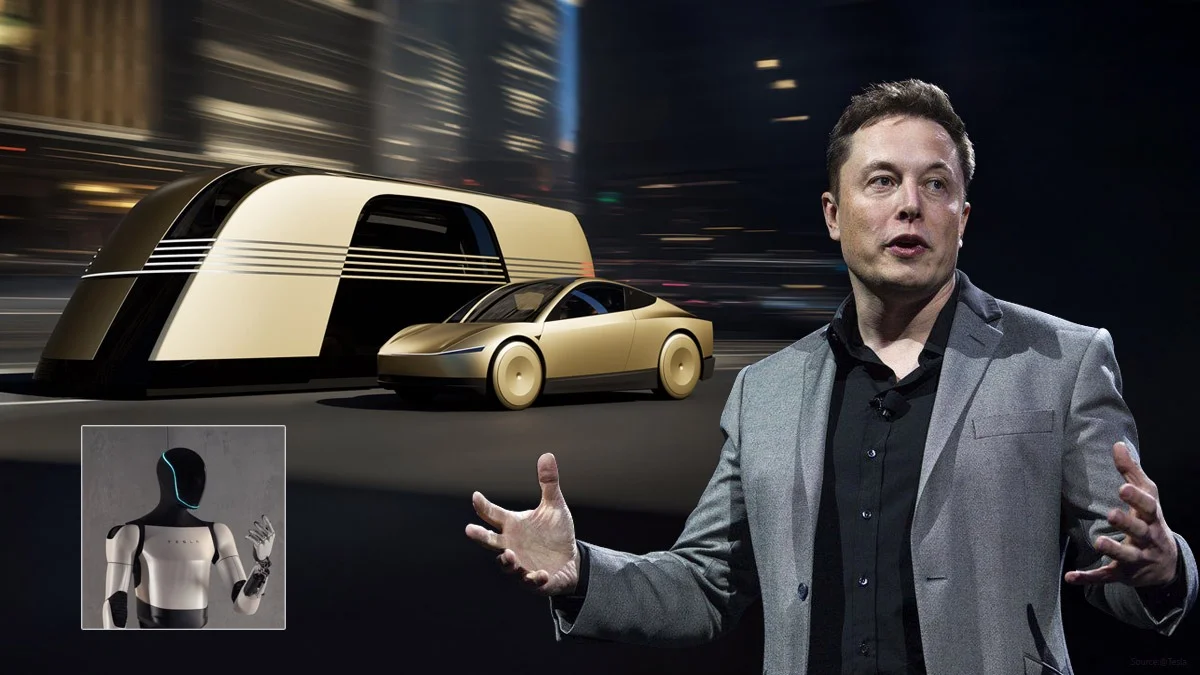Tesla has confirmed that production of its Cybercab, the company’s fully autonomous two-seater robotaxi, will begin in the second quarter of 2026 at its Giga Texas facility. The announcement was made by CEO Elon Musk during Tesla’s Q3 2025 earnings call, clarifying speculation about design changes and the vehicle’s production timeline.
Unveiled in October 2024, the Cybercab is designed as a steering wheel- and pedal-free electric vehicle intended for unsupervised autonomous operation. The company describes it as a key step in its long-term goal of launching a driverless ride-hailing network.
No manual controls in final design
Musk addressed recent online discussions following leaked photos showing Cybercab prototypes that appeared to have manual control elements. He stated these were likely early-stage testing units or unrelated vehicles, confirming that the production version will not include any steering wheels or pedals.
“The Cybercab will not have a steering wheel or pedals,” Musk reiterated during the call. “These sightings are from testing mules and are not representative of the final product.”
The Cybercab’s simplified design, lacking mirrors and traditional driver interfaces, is intended to reduce manufacturing costs and improve efficiency. Tesla aims for an estimated price range of $25,000 to $30,000, targeting widespread adoption once regulatory clearances for full autonomy are achieved.
Focus on autonomy and production scale
Musk described the Cybercab programme as the company’s “largest production expansion to date,” with manufacturing capacity expected to ramp up through 2026 and 2027. The company’s Full Self-Driving (FSD) software, currently undergoing further refinement and validation, will serve as the core operating system for the vehicle.
Tesla has also expanded recruitment for its Cybercab production team at Giga Texas, signalling an acceleration of development following earlier estimates that placed production at the end of 2025.
Industry analysts have noted that the announcement reinforces Tesla’s confidence in its AI mobility strategy, positioning the Cybercab as a central element in the company’s transition towards autonomous transport services.
Regulatory outlook and next steps
While Tesla continues to pursue regulatory approval for unsupervised autonomous driving in key markets, Musk said that internal testing at the Fremont track and ongoing crash safety evaluations are progressing as planned.
The company expects the Cybercab to play a pivotal role in reducing per-mile transportation costs and expanding Tesla’s participation in the emerging robotaxi market over the next several years.

